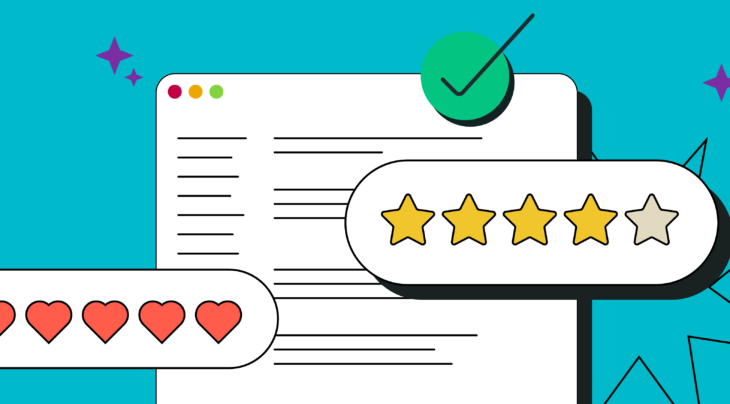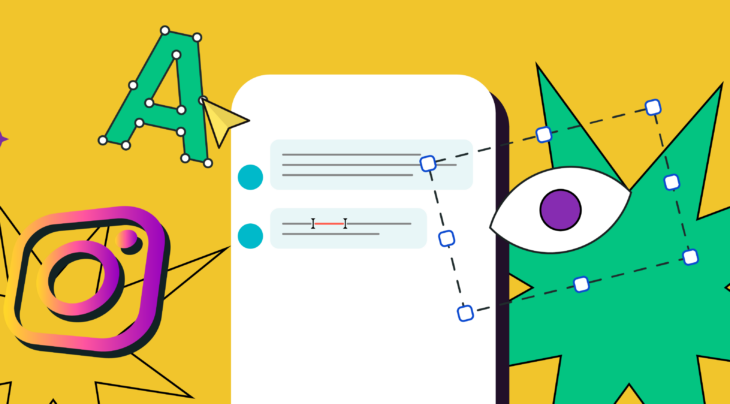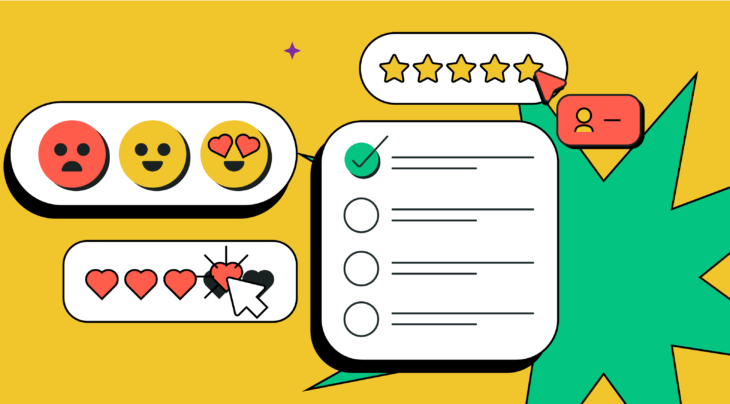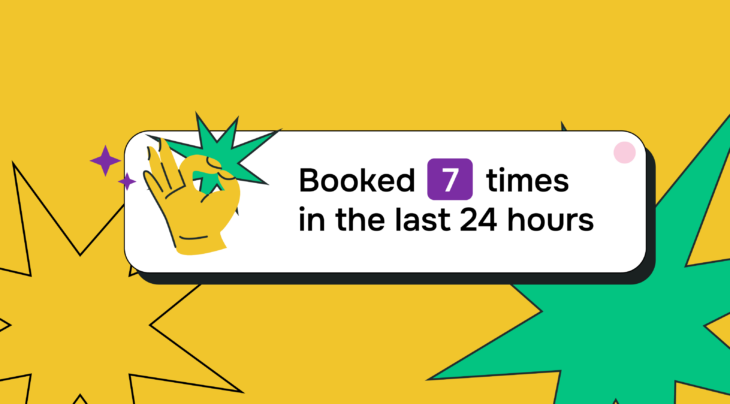Email marketing is a powerful communication channel, but only a well-elaborated strategy will make it work. It starts with a quality mailing list.
In this article, we’ll uncover how to use subscription forms to collect email addresses, discuss the types of sign-up forms, and share the knowledge of how to get the most out of your email marketing strategy.
Why bother with a mailing list
The first move to a strong email campaign is building a mailing list which consists of real people interested in what you are doing.
Here are four reasons for making a healthy mailing list:
- Great engagement
If someone takes time to share their email address, they are ready to get involved with your product or content. - High sales
Email is the most effective way to sell your product to your prospects and build deeper relationships with them. In fact, for every $1 spent on email marketing, you can expect an average return of $44. - Valuable feedback
You can get valuable customer feedback on your products and services, which will always help you change the approach and improve your campaign if needed. - Affordability
It has become so easy to create an email, especially with drag and drop editors and affordable pricing plans that allow you to maximize your profit from the campaign at a low cost.
Ready to start? We’ll walk you through different subscription forms to collect email addresses of your website visitors. But first, read about some principles on how to create a subscription form.
The simpler, the better
To convert more website visitors into subscribers and customers, make your sign-up forms as intuitive as possible. How?
- Limit the amount of the required information. People get confused when they see too many fields to fill in, so many of them just leave. On the contrary, by reducing the number of fields, you can increase your conversion rates.
- Use clear and simple language for the form title to draw people in and encourage them to take action.
- Place different types of subscription forms on several pages of your website to be ready to engage with your prospects right away.
Types of subscription forms
There are four types of subscription forms you can choose based on your needs: pop-up window, floating, fixed, and embedded.
Pop-ups
Pop-up windows are a great way to bring attention to your email campaign. The most important factor with pop-ups is timing. It’s better if your pop-up appears after a user has spent at least 60 seconds browsing your website. That way, he or she already has some idea of your content by the moment the pop-up appears. Another good option is to time a pop-up at the exact moment a user is going to leave the page. This way, they will see your message before they actually click on the X button.
Below is an example of the pop-up window from Urban Decay website. It appears followed by a faded background after a user has spent some time on the company’s homepage. Such pop-ups are called lightbox pop-ups, and they are proven to bring more subscribers since they target a user at the exact moment of interest.
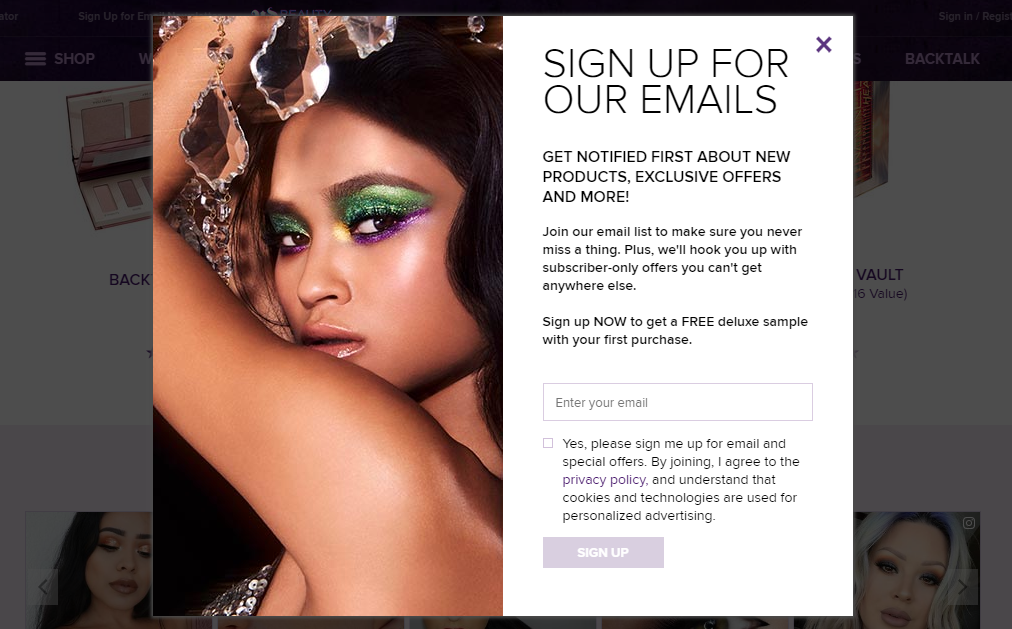 Nike, in its turn, offers website visitors a two-step form. At first, a user enters their email, and, after clicking the ‘Next’ button, the second page appears, where a person is to specify gender and date of birth. At each step, the user can decline the subscription. In such way, Nike collects personal information to later segment the subscribers’ base and send them only relevant content.
Nike, in its turn, offers website visitors a two-step form. At first, a user enters their email, and, after clicking the ‘Next’ button, the second page appears, where a person is to specify gender and date of birth. At each step, the user can decline the subscription. In such way, Nike collects personal information to later segment the subscribers’ base and send them only relevant content.
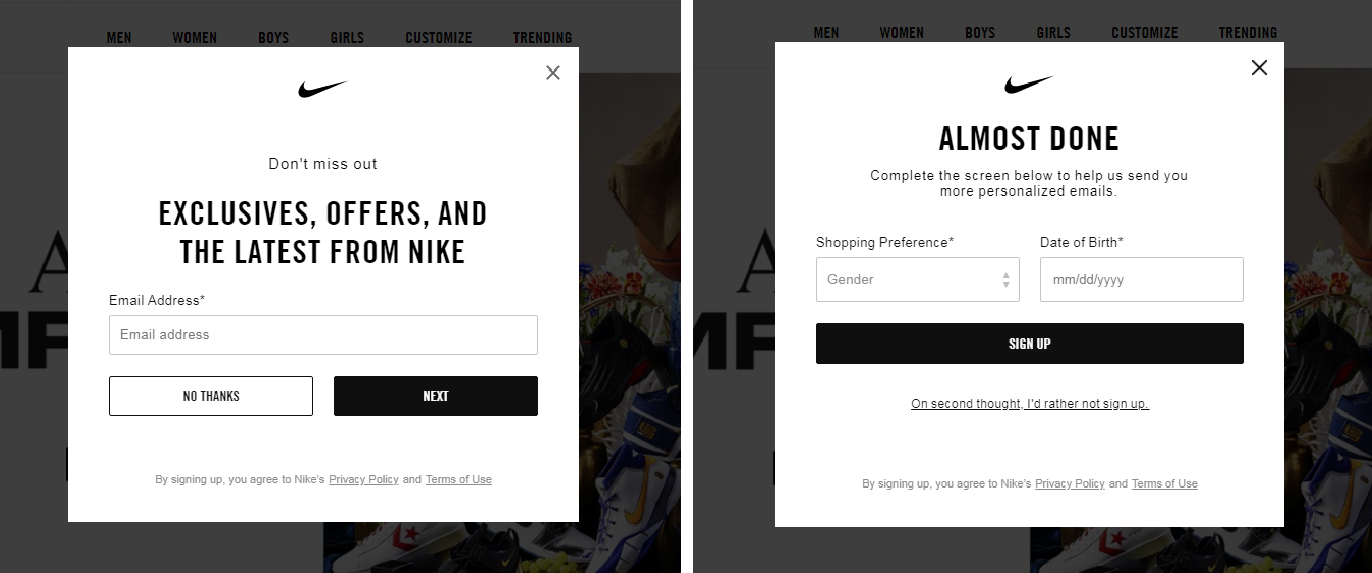
Take a look at some more email pop-up tips and examples to improve your opt-in rates and conversions on our blog.
Embedded forms
Embedded forms can be placed anywhere on your website page. Basically, such form appear in a footer or a sidebar. The idea is to make it big and bright enough to draw user’s attention. If your webpage is rather large, a good solution is adding an in-line sign-up form, which will be located in the middle of your text. With this type of form, it is better to use simple colors and design because your readers will notice it in the middle of the text anyway while reading. Too many colors and elements may be too annoying.
The New York Times made their embedded sign-up form in a classy design which doesn’t distract readers’ attention from the article.
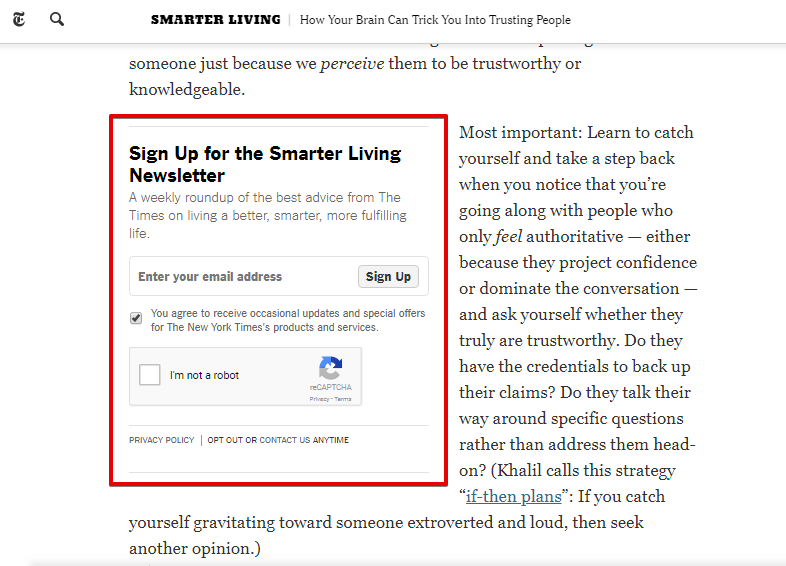
Vox resorted to a bit brighter color scheme and horizontal option.
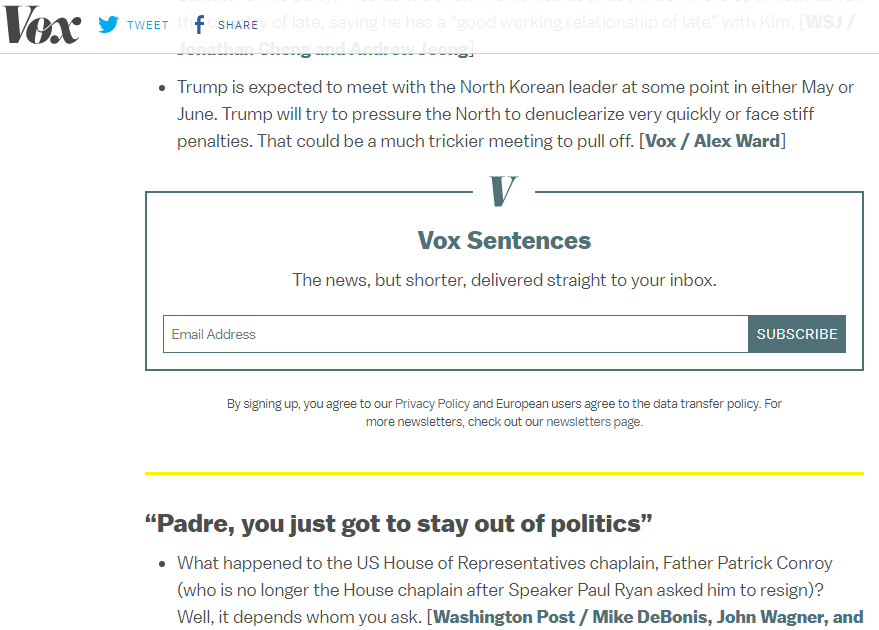
Huffington Post moved their subscription form to the sidebar. They highlighted it with vivid colors, and used a fresh approach to the copy, which looks friendly and appealing. Without any extra words, users understand that this newsletter will be sent every morning.

Fixed forms
Fixed forms usually come up at a specific part of the screen and remain there until a user has closed or proceeded with it.
The New York Times prefers different sign-up forms. One of them is a fixed form on the bottom of the screen. It doesn’t bother the readers but still attracts their attention.
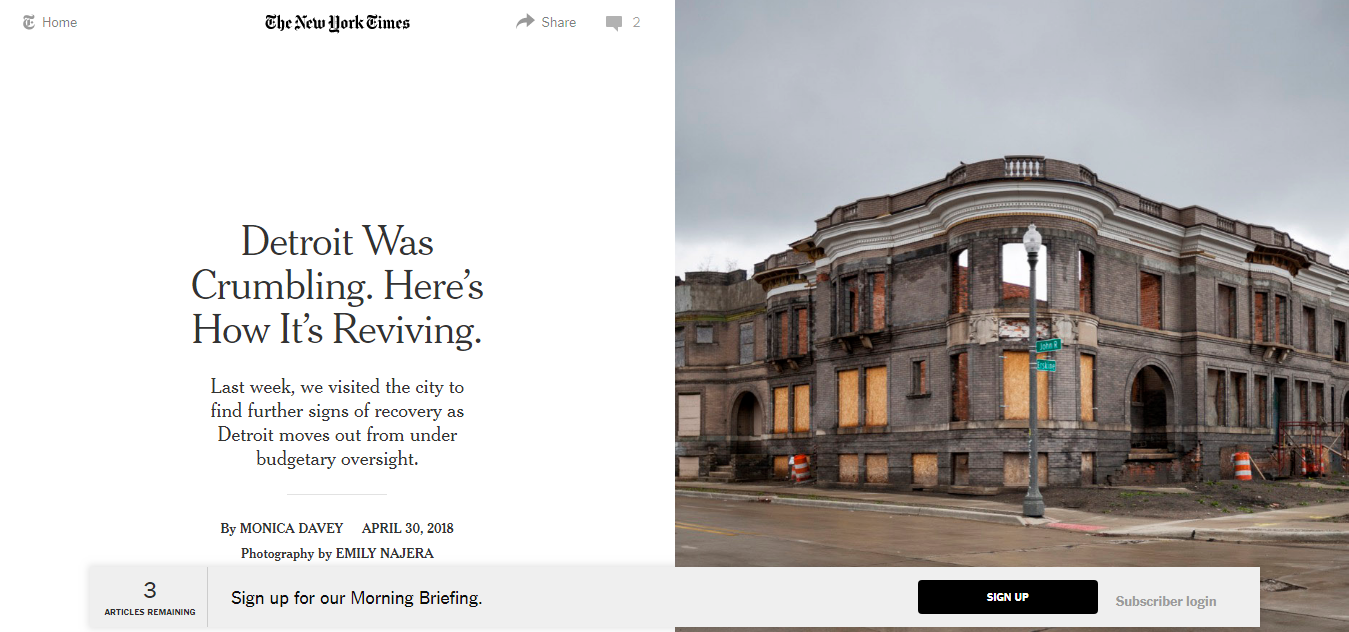
Floating forms
Floating forms are stuck to any part of the page and remain always visible while website visitors scroll the page until they take some action: close it or subscribe. A form like this is a great solution for a brand to promote content and highlight hot deals without being aggressive.
OfficeVibe uses a form, which slightly slides in on the bottom of the webpage, to offer expert leadership tips delivered right to the inbox.
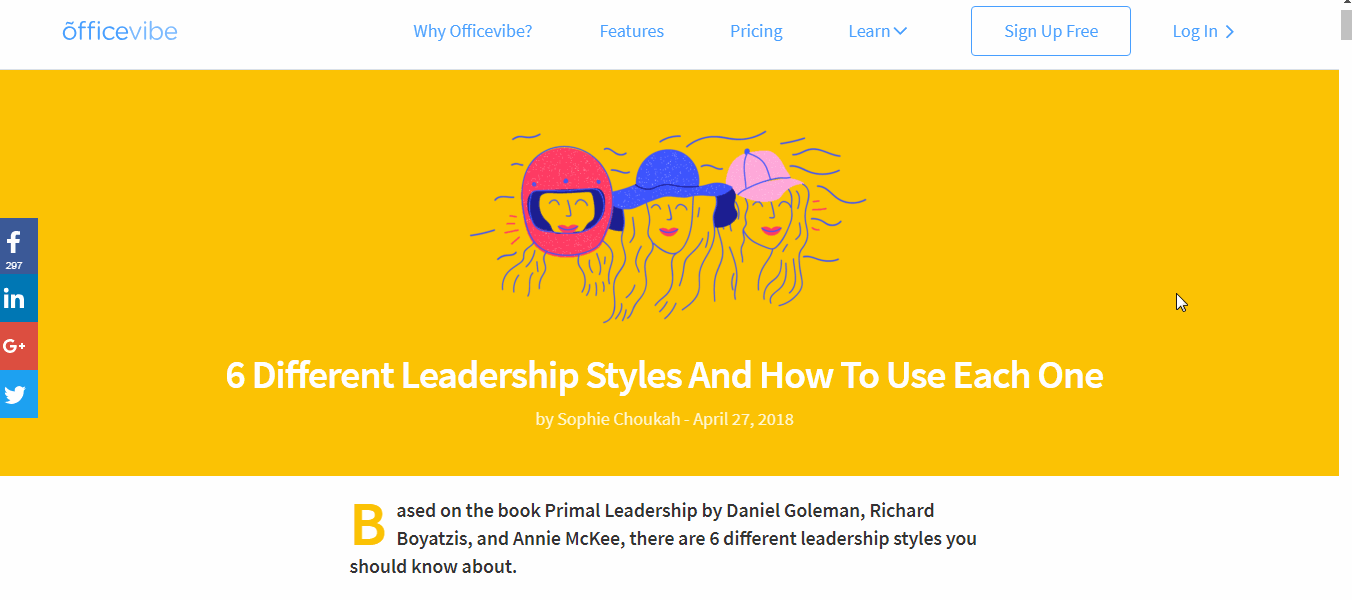
Wait But Why takes on a creative approach and has a little fun with the copy. The design is simple, but you can’t miss the form with such an unexpected and humorous heading. Still the form contains useful information: it mentions how many emails and what content will be sent out.
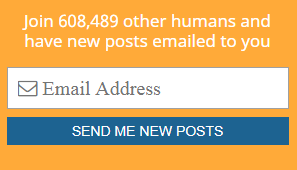
Check out a list of the best online form builders to find other types of forms that might be suitable for your business.
How to make it work
We’ve covered the “What?” and “Why?” parts of the process but an equally important question is “How?”. Here are five tips to make your subscription form even more effective.
Offer a lead magnet
Think of creating a lead magnet, i. e. a piece of valuable content in exchange for your potential subscriber’s email address.
H&M, for instance, uses a 20% discount plus free shipping on the next purchase as a lead magnet and describes the perks users can expect after they sign up. Brand fans and those interested in fashion will appreciate the value H&M offers to its subscribers.
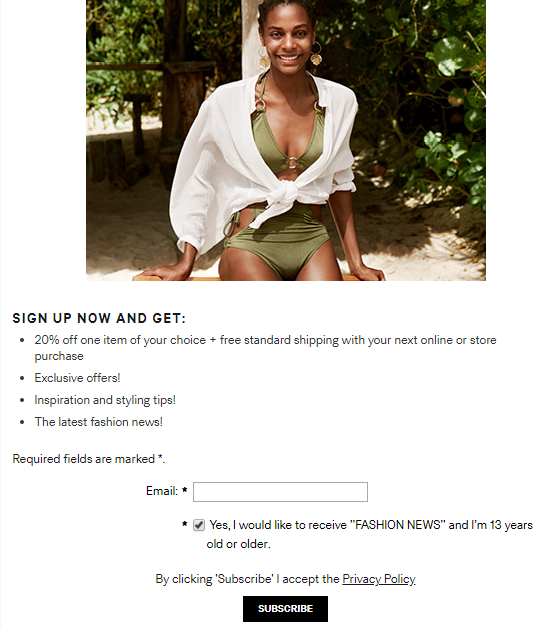
Social Triggers, in turn, offer a free eBook that teaches simple approach to getting first subscribers. They make it hard to reject the offer by placing the contrasting buttons next to each other and using the word “free” on each of them.
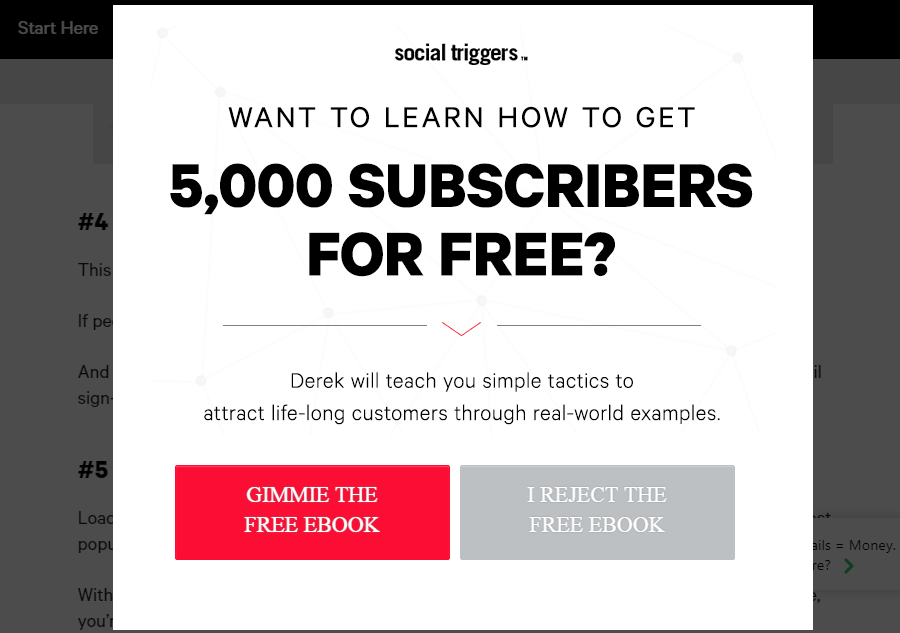
Use social proof
Social proof is a strategy used to motivate people to take an action by leveraging herd behavior. In other words, this strategy is based on the assumption that if someone sees that everyone else is doing something, they’ll be more likely to do it themselves.
Take a look at the embedded form by Wait But Why. They have added a subscriber count to it to convince users to become a part of their big group. Of course, this trick will work only with large and impressive numbers.

Let subscribers choose their preferences
If you have a lot of news and updates coming up regularly, it’s smart to divide your news streams into groups so that a user can choose what’s relevant particularly to them.
That’s exactly what The New York Times came up with: they offer to filter the content and subscribe only to those topics which a user is interested in.
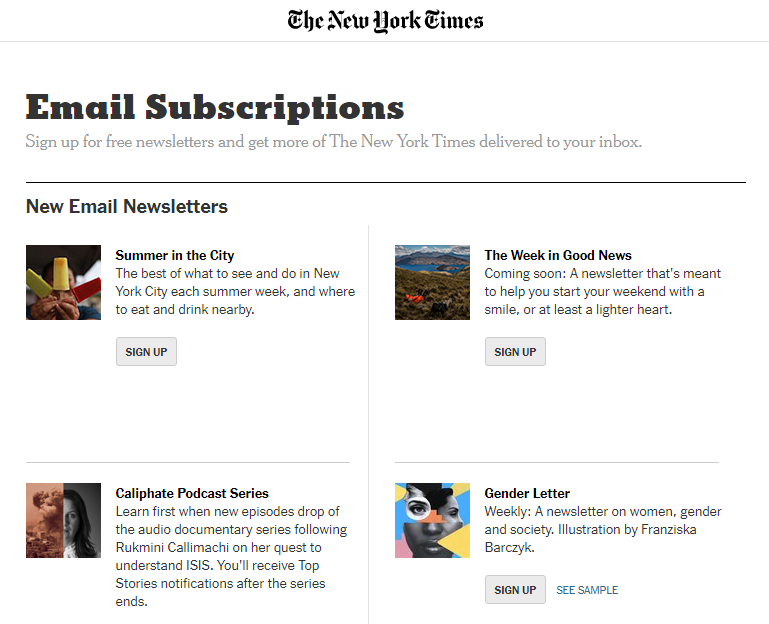
Be simple
Simplicity is the key: you should use a clear and straightforward copy and aesthetically pleasing design.
Zara is practicing minimalism with their subscription form. It consists of just one field; its design is aligned entirely with their official website’s style.
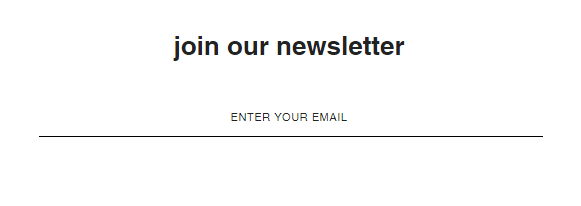
HubSpot paints their form orange to make it stand out. Apart from email address, they request to check the occupation to sort out their audience.

Address creativity
Funny and creative approach brings color to the most regular things. Take some time to write a hilarious copy or find a new way to present your emails.
Shinesty resorts to making fun of all emails in general and promises to send out only high-quality content. The company also offers a discount and places a confirmshaming text on the subscribe button so that you just can’t say “No” to it.
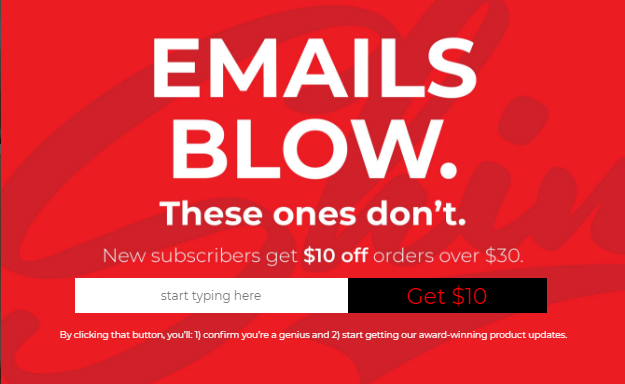
Subscription forms bring great value to email marketers, who strive to receive more engaged customers. Feeling motivated? Use these simple techniques to create a subscription form and send out your email campaigns via SendPulse.



